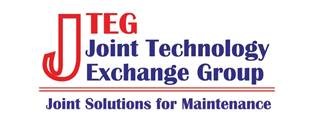Abstract
USMC logistics elements will provide an overview of their sustainment technology processes to include an enterprise USMC Innovation briefing, and a USMC depot update and technology status. They will then provide examples of several maintenance related technologies that they have either successfully implemented in the field or depot level maintenance facilities, or are evaluating their ability to improve DoD equipment effectiveness and/or efficiency. Examples include an optical recognition project with Logistics Command, housing repair using cold spray, and depot production workflow modeling.
Briefs
01 USMC_JTEG_Intro
02 MAROCORLOGCOM_GTRI_July19
03 iMAST Overview Presentation JTEG July 2019
04 Hardwire Relamination Line_JTEG_30 July 2019v5_Distribution_A
05 18_July_2019 XACT slide deck
Minutes
Event: On 30 July 2019, the Joint Technology Exchange Group (JTEG), in coordination with the National Center for Manufacturing Sciences (NCMS), hosted a virtual forum on “USMC Sustainment Technology”.
Purpose: The purpose of this forum was to provide an overview of USMC logistics elements’ sustainment technology processes to include an enterprise USMC Innovation briefing, and present several maintenance related technologies that the USMC has successfully implemented in the field or depot level maintenance facilities, or are evaluating their ability to improve DoD equipment effectiveness and/or efficiency.
Administrative: This was an open forum. The presentations, along with questions and answers, were conducted through Defense Collaboration Services (DCS) and Adobe Connect. A separate audio line was used. Approximately 58 participants from across DOD and industry joined in the forum. (32 on AdobeConnect, 24 on DCS, 2 emailed the slides).
Overview: Bill Baker welcomed everyone to the forum and provided a brief overview of USMC sustainment technology and a preview of the agenda.
Georgia Tech Research Institute (GTRI) – Jeff Evans, GTRI, provided an overview of GTRI’s current projects for the Marine Corps Logistics Command to include: Workflow Modeling and Optimization, Workforce development, AM Material Qualification, Automatized Vehicle Inventory, Data Repository, and Virtual Reality Training.
Institute for Manufacturing and Sustainment Technologies (iMAST) – Tim Bair, Applied Research Lab (ARL) at Penn State, provided an overview of the iMAST program to include ManTech, RepTech, and Accelerated Capability Projects. Overview of current projects to include Marine Corps projects on Modeling Production Processes and Cold Spray Repair.
Repair of Transparent Armor – Tim Donoghue, Hardwire LLC, described the Hardwire developed repair process for delaminated ballistic glass and developed a production line (equipment) to support the repair efforts.
Weapon SN Extraction Accountability, Count with Technology (XACT) – Mike Addington, KPMG, discussed the ability to digitally read serial numbers on weapons and gear which creates a fundamental shift in performance and highly functioning warehouse operation.
Next Generation Logistics (NEXLOG) – Tom Russell, NEXLOG USMC, provided an overview of the Marine Corps Installations and Logistics (I&L) Innovation and discussed the mission of NEXLOG. NEXLOG translates ideas into new or improved capabilities that offer new dimensions of performance.
Q&A – A Q&A occurred after each briefer finished their presentation. Questions and answers will be posted on the JTEG website with these minutes.
Closing Comments: Ray Langlais thanked the presenters for their contributions and all the work being done to support efforts in USMC sustainment technology development and implementation. He encouraged continued collaboration beyond the forum and the importance of information exchange within the DoD maintenance community and informed the group that all the slides except “NEXLOG” are cleared for public release and loaded on the JTEG website.
Action Items:
- Once the NEXLOG briefing is cleared for “public release” it will be posted on the JTEG website at https://jteg.ncms.org/ .
Next JTEG Meeting: The next scheduled JTEG virtual forum is 27 August, 1:00 – 3:00 pm EST. The topic is “Counterfeit Parts Detection”.
POC this action is Ray Langlais, rlanglais@lmi.org , (571) 633-8019
Q&A
Georgia Tech Research Institute (GTRI): Jeff Evans (GTRI)
No Questions
Institute for Manufacturing and Sustainment Technologies (iMAST): – Tim Bair (Applied Research Lab (ARL) at Penn State)
Q1. Please advise what is the status of releasing laser ablation for repair maintenance?
A1. We had an event years ago that resulted in some substrate damage. NNSY and PSNSY are conducting efforts to characterize the exact effects on different systems, different power levels, and identify fidelity.
Q2. Different manufacturers have different power levels …characteristics etc. How do I get our equipment in to be evaluated?
A2. We are currently limited to one manufacturer — very specific. We will be expanding next year. Keyport is looking at several different systems. The POC is Matt Binsfield.
Comment: Beam delivery is the key and the process control to prevent … not the laser source
Q3. On the Acoustic Sensing, What voltage Ranges and frequencies are involved, looking for Communication Shelters
A3. Voltage ranges basically any circuit 110 and up, no limit. Micro arching is the focus so independent of voltage level. The CTRL system picks up specific frequency ranges. Picking up micro-arching occurs right around 40Htz
Repair of Transparent Armor: Tim Donoghue (Hardwire LLC)
No Questions
Weapon SN Extraction Accountability, Count with Technology (XACT): Mike Addington (KPMG)
No Questions
Nest Generation Logistics (NEXLOG): Tom Russell (NEXLOG, USMC)
Q1. As far as the rapid rate of recent technology, which in our case, the lines of industry are driving, what strategies are you using to keep up with that rate in Policy?
A1. That is a challenge. It is easier to say, “How are you chasing the technology?” The policy piece needs parity or you will experience the “Valley of Death” We are taking a holistic approach…We ask “What do you need me to do to get the ball rolling? I.e. CDDs, other acquisition documents, etc. We do have to rely on other organizations also.
